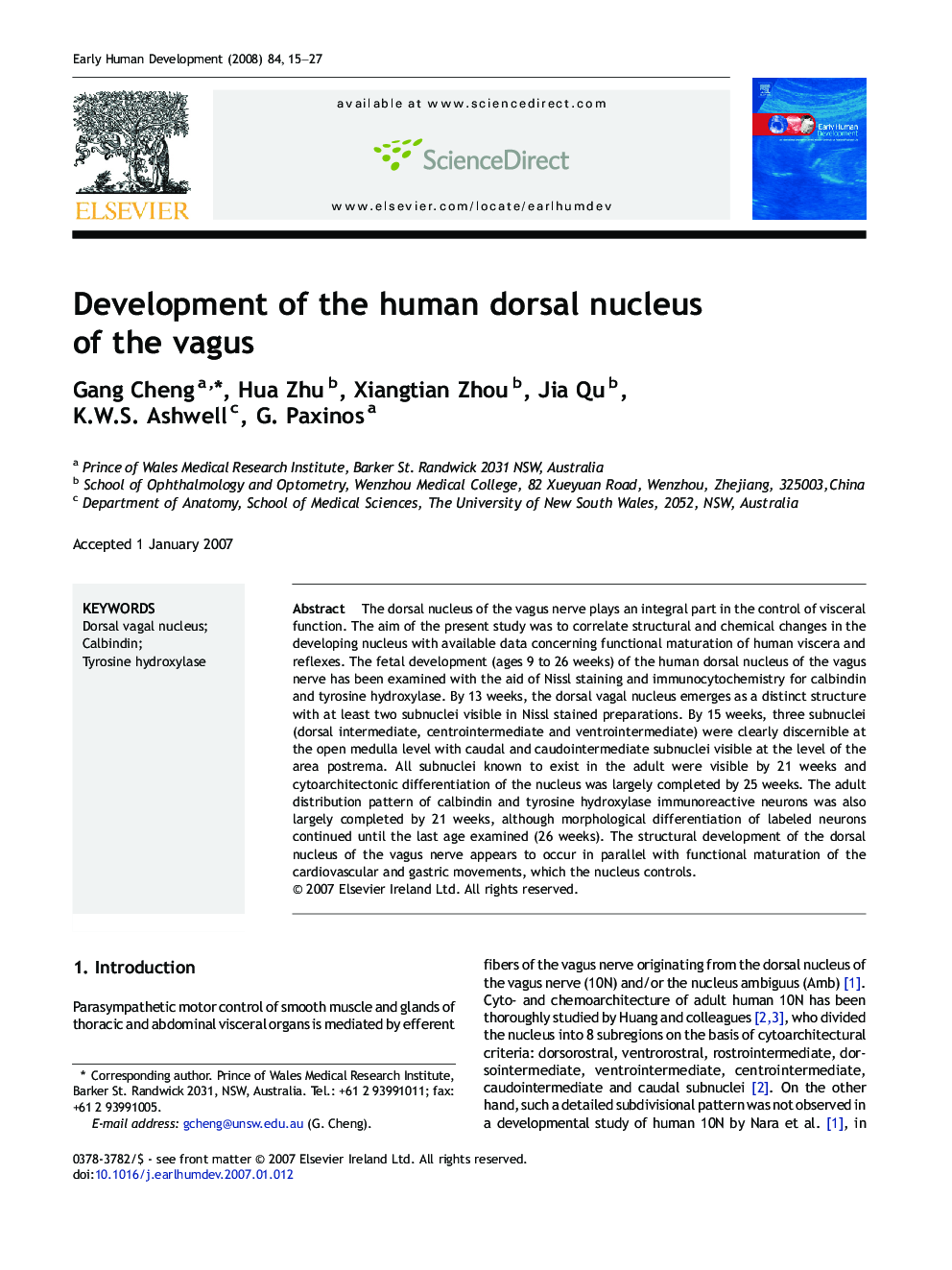| Article ID | Journal | Published Year | Pages | File Type |
|---|---|---|---|---|
| 3918581 | Early Human Development | 2008 | 13 Pages |
Abstract
The dorsal nucleus of the vagus nerve plays an integral part in the control of visceral function. The aim of the present study was to correlate structural and chemical changes in the developing nucleus with available data concerning functional maturation of human viscera and reflexes. The fetal development (ages 9 to 26Â weeks) of the human dorsal nucleus of the vagus nerve has been examined with the aid of Nissl staining and immunocytochemistry for calbindin and tyrosine hydroxylase. By 13Â weeks, the dorsal vagal nucleus emerges as a distinct structure with at least two subnuclei visible in Nissl stained preparations. By 15Â weeks, three subnuclei (dorsal intermediate, centrointermediate and ventrointermediate) were clearly discernible at the open medulla level with caudal and caudointermediate subnuclei visible at the level of the area postrema. All subnuclei known to exist in the adult were visible by 21Â weeks and cytoarchitectonic differentiation of the nucleus was largely completed by 25Â weeks. The adult distribution pattern of calbindin and tyrosine hydroxylase immunoreactive neurons was also largely completed by 21Â weeks, although morphological differentiation of labeled neurons continued until the last age examined (26Â weeks). The structural development of the dorsal nucleus of the vagus nerve appears to occur in parallel with functional maturation of the cardiovascular and gastric movements, which the nucleus controls.
Related Topics
Health Sciences
Medicine and Dentistry
Obstetrics, Gynecology and Women's Health
Authors
Gang Cheng, Hua Zhu, Xiangtian Zhou, Jia Qu, K.W.S. Ashwell, G. Paxinos,
